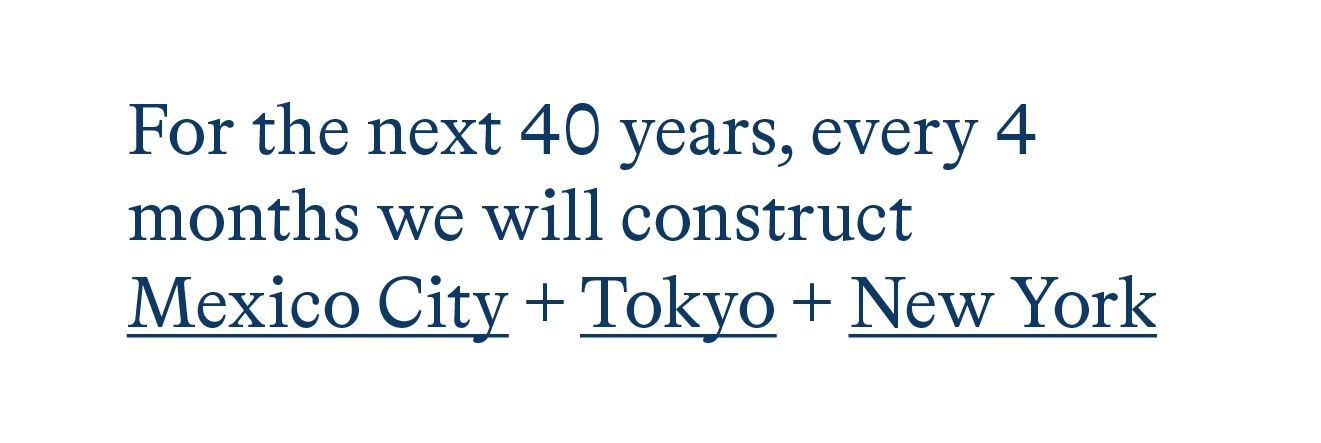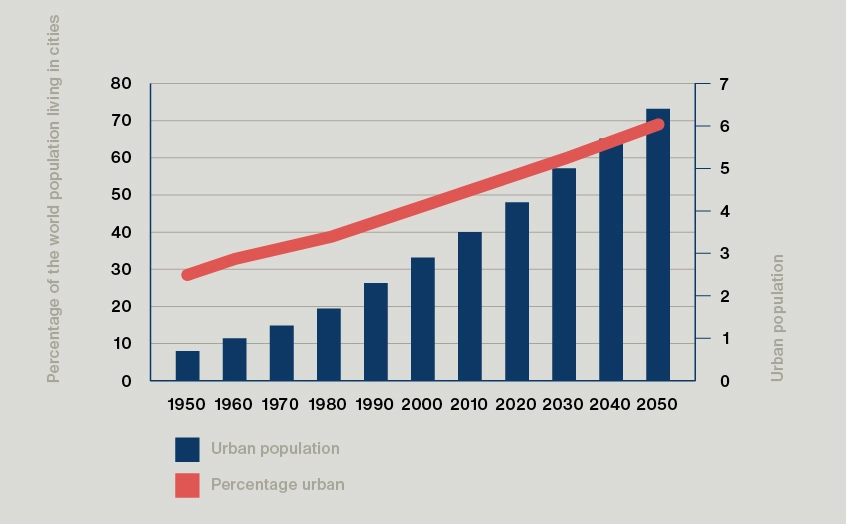A less well-known fact is the speed at which our cities are expanding. The figures are so extreme that it is almost impossible to imagine they actually mean.
But we’ll give it a go: Every 4 months for the next 40 years, the current dynamic of urbanisation will produce new urban living spaces (namely new cities, new districts) that are equal to the size of Mexico City, Tokyo and New York combined.
There are currently over 1,500 cities with more than 500,000 inhabitants.

What does that mean in concrete terms? On the one hand, this means that even though there are more people, we don’t have to take up proportionally more square footage. Today, all existing cities take up only 2% of available land area but are home to almost 60% of all human beings. These comparatively small areas have incredible energy requirements and produce masses of waste and harmful substances. Around two thirds of global energy production is consumed in the cities, and they are responsible for around 70% of all CO2 emissions.
This means that the cities can be both the solution and the scaling-up of many of the challenges that we face.The great opportunity is in the high density and social proximity of urban areas. Because so many people live in the cities, measures to promote low-CO2 transport or to reduce air pollution can have an immediate impact.For example, a transition to solar energy can only be carried out to major effect in the cities. Contrast this with a comparable exercise in any sparsely populated rural area, where far more effort would be required to reach the same number of consumers.

Public spaces tailored to the needs of people ensure that developments move in the right direction and that the future holds not only larger but also more liveable cities. Public spaces create identity and a sense of belonging. Both of these are basic requirements for empathy and the consideration of others, in particular in densely populated environments.